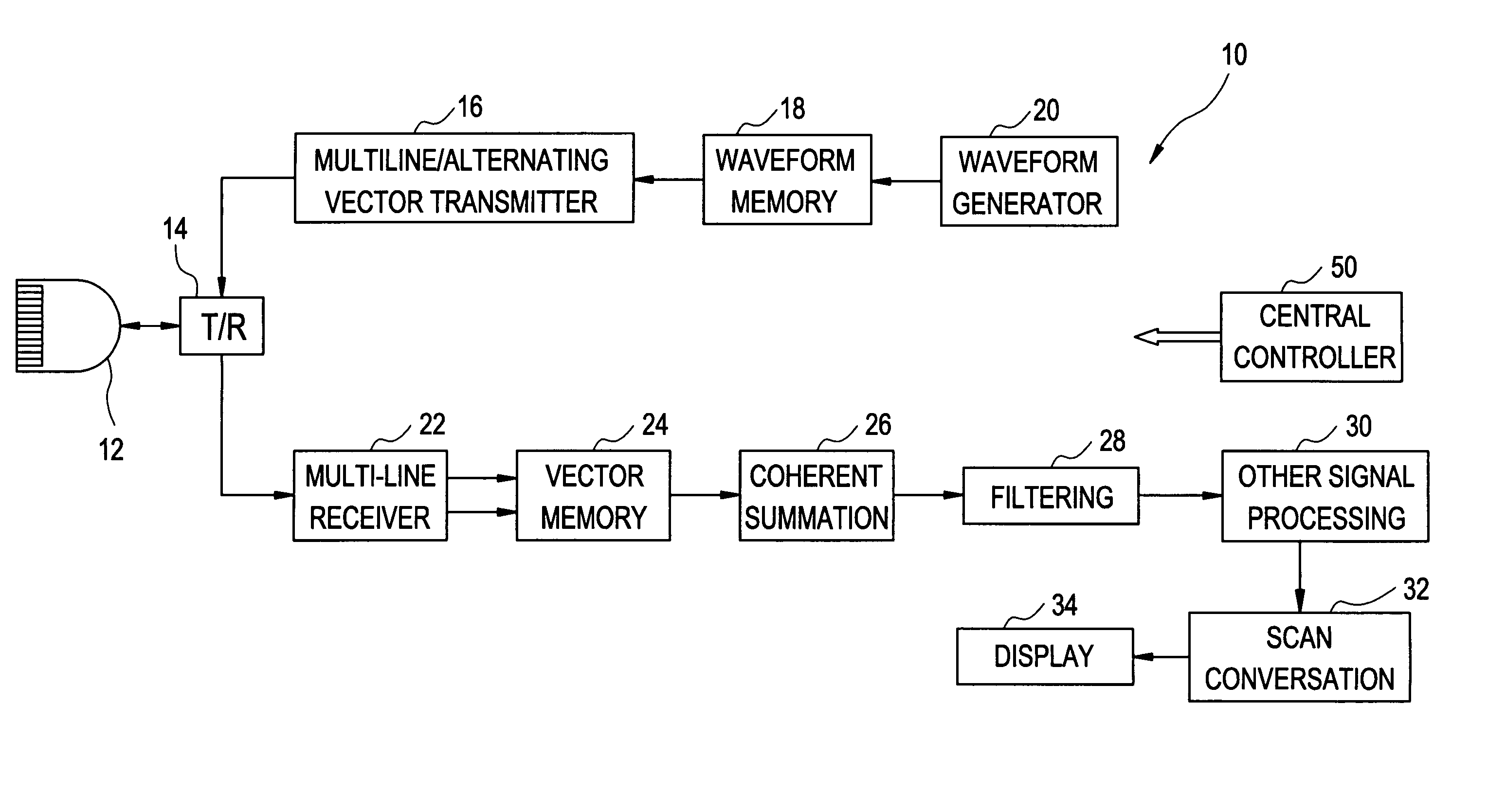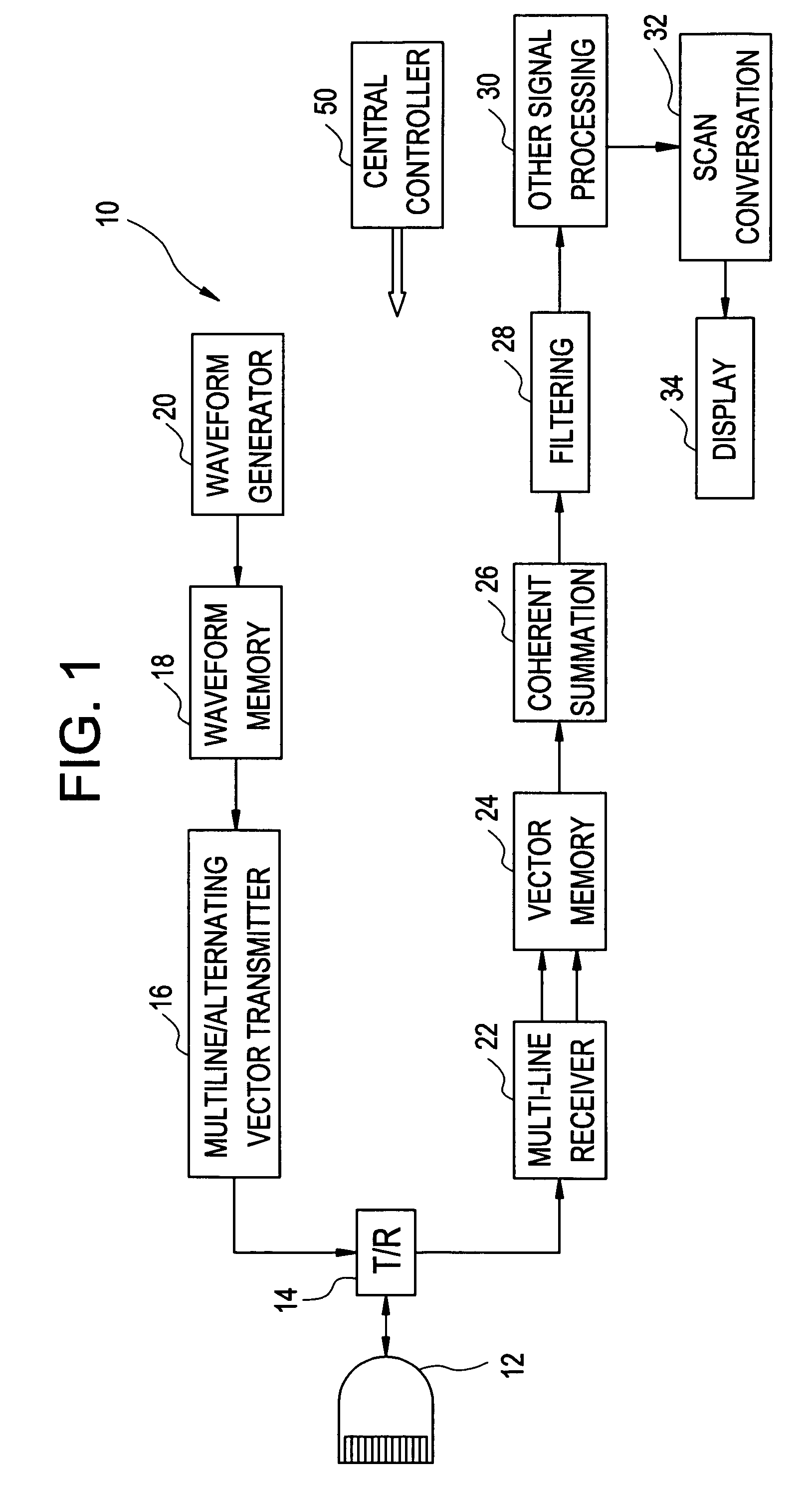Method and apparatus for tissue harmonic imaging with natural (tissue) decoded coded excitation
a harmonic imaging and tissue technology, applied in the field of tissue harmonic imaging using an ultrasound machine, can solve the problems of limiting the bandwidth of the probe, the use of a narrowed transmit fundamental band, and so as to improve the harmonic imaging performance, avoid the frame rate drop, and increase the penetration and snr
- Summary
- Abstract
- Description
- Claims
- Application Information
AI Technical Summary
Benefits of technology
Problems solved by technology
Method used
Image
Examples
Embodiment Construction
[0033]For the purpose of illustration only, the following detailed description references a certain embodiment of an ultrasound machine, apparatus or device. However, it is understood that the present invention may be used with other devices or imaging systems.
[0034]One or more embodiments of the present invention attempts to solve the three challenges discussed previously with respect to current tissue harmonic imaging implementations: 1) trade-off between penetration, SNR and resolution; 2) near field harmonic performance; and 3) frame rate drop with multiple firing for higher resolution. Embodiments of the present invention solve these challenges using frequency modulated coded excitation pulses in combination with pulse inversion, where the waveforms have a time bandwidth product greater than about 1, and a bandwidth greater than about 80%. It is contemplated that no costly matched decoding / compressing filter are used for decoding.
[0035]FIG. 1 illustrates an ultrasound apparatus...
PUM
 Login to View More
Login to View More Abstract
Description
Claims
Application Information
 Login to View More
Login to View More - R&D
- Intellectual Property
- Life Sciences
- Materials
- Tech Scout
- Unparalleled Data Quality
- Higher Quality Content
- 60% Fewer Hallucinations
Browse by: Latest US Patents, China's latest patents, Technical Efficacy Thesaurus, Application Domain, Technology Topic, Popular Technical Reports.
© 2025 PatSnap. All rights reserved.Legal|Privacy policy|Modern Slavery Act Transparency Statement|Sitemap|About US| Contact US: help@patsnap.com



